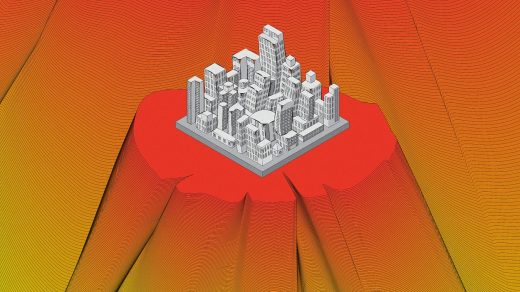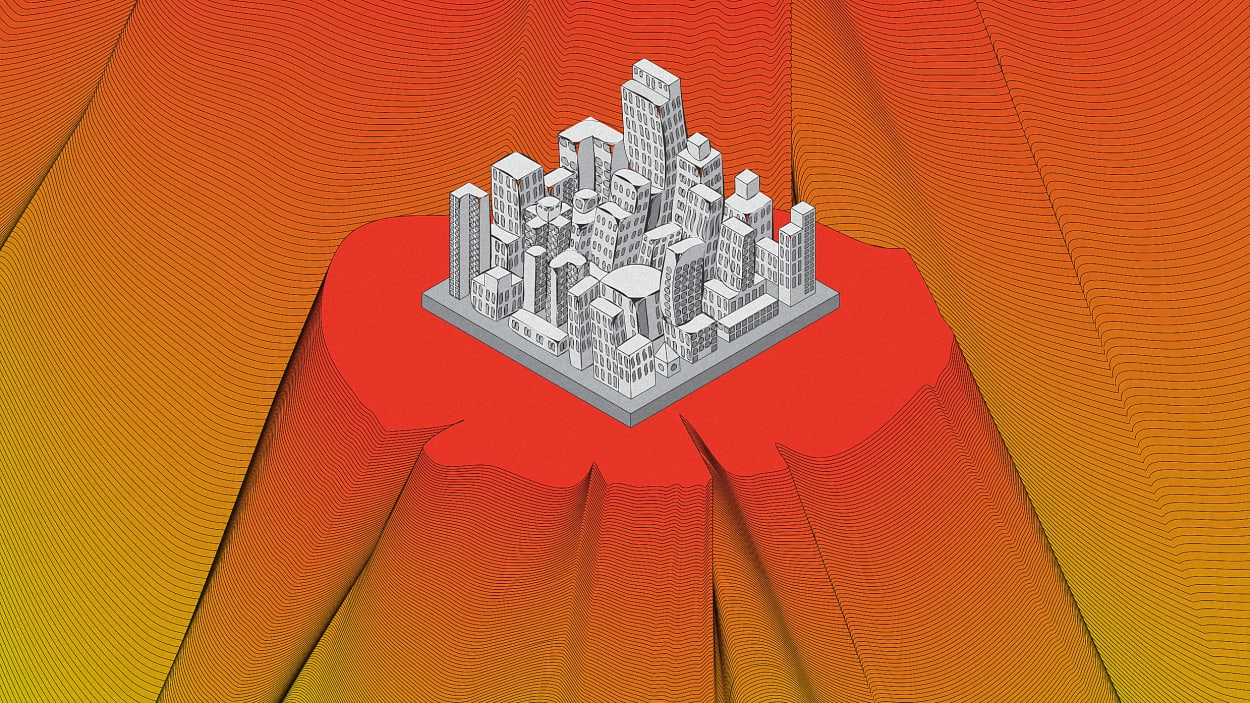Underground climate change exists—here’s how cities should prepare for it
The urban heat island effect has been thoroughly documented: Heat from the sun gets reflected and absorbed by buildings and roads, which heat up during the day and release heat at night, contributing to overall higher temperatures in cities versus the suburbs.
Now, a new study shines a light on a different kind of heat island, this one underground.
The study, which was recently published in the scientific journal Communications Engineering, examines the impact of climate change on the ground that lies beneath cities, and the correlation is pretty damning. As ground heats up, it also deforms. Known as “underground climate change,” the phenomenon causes soil to expand and contract, which can vertically displace building foundations by as much as 12 millimeters and cause them to sink by as much as 8 millimeters, leading to potential cracks and corrosion.
The good news: Researchers say the phenomenon doesn’t pose an immediate danger to human lives, nor can it affect the structural integrity of a building. Alessandro Rotta Loria, an assistant professor of civil and environmental engineering at Northwestern’s McCormick School of Engineering and lead author of the study, says that underground climate change evolves very slowly and it is very unlikely to cause a building to collapse. The bad news: The impact can be very costly. Rotta Loria has two solutions in mind—but first, some background.
As part of the study, Rotta Loria and his team installed more than 150 temperature sensors in basements, subway tunnels, and underground parking lots across the Chicago Loop, a particularly dense part of the city. They even buried a few sensors in a park along Lake Michigan. That was in 2020. Now, the team has pored over three years of data, and identified that temperatures under the Loop are often 10 degrees warmer than temperatures beneath the park, which is away from buildings and subway tunnels.
To extrapolate the results, the team also built a 3D computer model to simulate how those temperatures evolved from the year Chicago completed its subway tunnels (1951) and to predict how they will evolve by 2051. The temperature variations that resulted from the model suggest that it is very likely for underground climate change to have already affected some building foundations.
There are two key reasons why this is happening. The first has to do with the urban heat island effect. “At least a portion of the heat above the city will diffuse underground overtime,” says Rotta Loria. The second is related to the inordinate amount of infrastructure that cities need to function. When homes are heated with furnaces or boilers—as most U.S. homes are today—these produce heat. When trains brake underground, they produce heat. When cars drive through parking lots, they produce heat. When we go about our day, we produce heat, as well. And some of that heat ends up being diffused underground, contributing to the underground climate change.
Rotta Loria says that old or dense cities like New York City or London are most at risk—as are waterfront cities or those built on soft soil. By extension, he says that thanks to modern construction methods, newer buildings are not the culprits and cities should therefore focus on retrofitting older buildings instead.
So, what to do? First and foremost, the researcher recommends that cities insulate underground enclosures like basements, parking lots, etc. Large public facilities with underground spaces like hospitals and schools could be a good first step. Standard thermal insulation like the one you see on the facade of a building is also an option, but Rotta Loria says that about 70 to 80% of a building’s heat emanates from the underground, where furnaces, boilers, and other mechanical systems are located.
This is the most effective approach as it would completely isolate underground structures and prevent most heat from penetrating the soil around it. But if that isn’t possible, he also suggests integrating geothermal technologies that could harness that excess heat (read: absorb and divert it from the soil, where the heat would cause it to expand and contract), convert it into energy, and use it to heat buildings. Known as shallow geothermal energy, the system is already widely deployed and relies on geothermal heat pumps that transfer heat from the ground back into buildings during the winter. A recent study (independent of Rotta Loria’s research) describes the technology as a promising solution for the decarbonization of the energy sector.
To visualize the temperature anomalies caused by underground climate change, Rotta Loria’s team has created a series of heat maps for the downtown area of Chicago, but they are now developing data-modeling tools that would allow any city to create their own heat map based on a only handful of datapoints. These could help cities figure out which buildings to begin with and are estimated be ready within the next six months.
(11)



